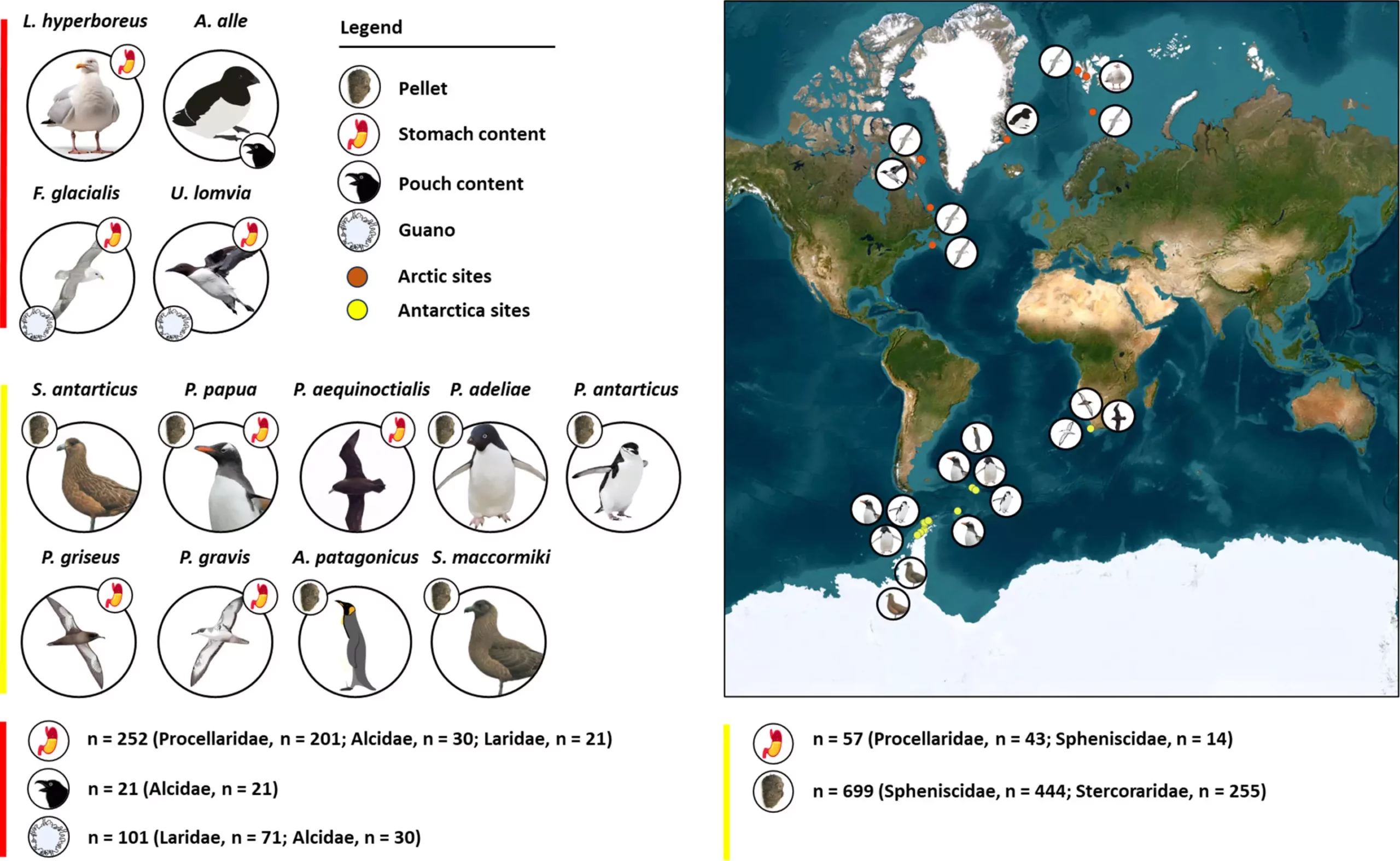Plastic pollution is a global environmental crisis that affects not only marine animals but also the pristine polar regions of the Arctic and Antarctica. While many are familiar with the heartbreaking images of marine animals entangled in plastic debris, the issue extends far beyond what meets the eye. The Arctic and Antarctica are now facing the impacts of plastic pollution, not just as larger macroplastics, but also as microplastics and nanoplastics that pose a significant threat to the fragile ecosystems of these regions.
A recent review published in Frontiers in Marine Science delved into the scale of plastic pollution in the polar regions, focusing on seabirds that inhabit these glaciated areas. Researchers examined over 1,100 samples collected over 40 years, including stomach contents, crop pouches, guano, and regurgitated pellets from 13 different species of seabirds. The study revealed that microplastics were present in 90% of samples from the Arctic and 97% of samples from Antarctica, with a median of 31.5 and 35 particles found in each sample respectively.
The ingestion of plastic particles by seabirds can have devastating effects on their health, including gastrointestinal blockages, toxicity, oxidative stress, and immune reactions. The presence of microplastics in krill, a staple food source for some penguins, further exacerbates the issue, highlighting the broader impact of plastic pollution on the entire ecosystem and trophic webs of these regions.
The study identified 14 types of polymer in the plastic particles, with polyethylene, polypropylene, and polystyrene being the most common forms. These polymers primarily exist as fragments resulting from the breakdown of larger plastic objects such as plastic bags, food containers, and packaging materials.
The decline in seabird populations in the Arctic and Antarctica in recent years underscores the urgent need for enhanced conservation efforts in these regions. With 64 and 43 species of seabirds respectively, the polar regions are facing multiple threats including plastic pollution, expedition tourism, commercial fishing, and the impacts of global warming on melting ice.
The far-reaching consequences of anthropogenic plastic pollution on polar regions serve as a stark reminder that no part of the planet is immune to the effects of human activities. As we continue to encroach on these pristine ecosystems, it is essential to implement concerted strategies to mitigate environmental stressors and protect the biodiversity of the Arctic and Antarctica for future generations.



Leave a Reply